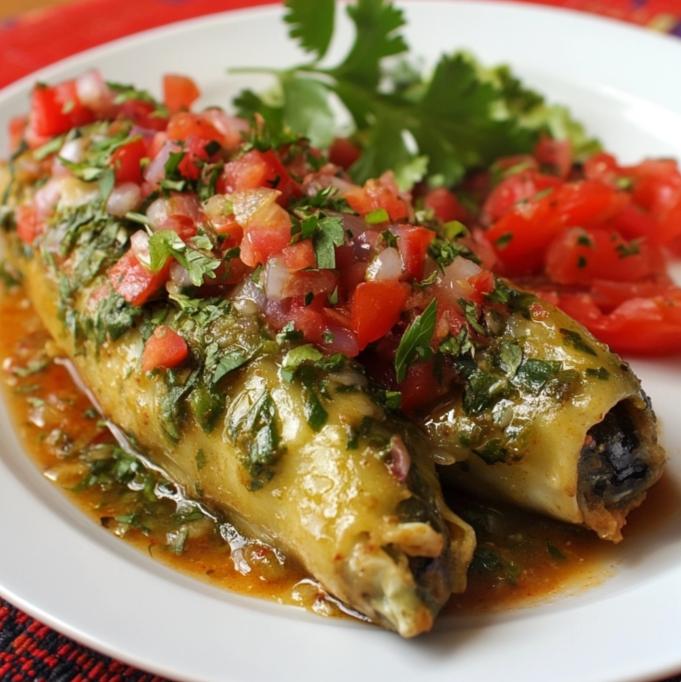Chiles rellenos are a hallmark of Mexican cuisine, celebrated for their rich flavors and cultural significance. But what exactly does chiles rellenos mean in English, and how has this dish earned its revered status? This article delves into the meaning, history, and preparation of chiles rellenos, while linking to other resources to provide a comprehensive understanding.
What Does “Chiles Rellenos” Mean in English?
In English, chiles rellenos translates to “stuffed peppers.” The dish’s name succinctly describes its essence: large, roasted peppers filled with various savory ingredients. This classic preparation captures the heart of traditional Mexican cooking.
For a closer look at the nuances between chile relleno and the pepper itself, explore this comparison of chile relleno and chile poblano.
Origins of Chiles Rellenos
The roots of chiles rellenos lie in the historical fusion of indigenous Mexican ingredients and Spanish culinary techniques during the colonial period. Originating in Puebla, Mexico, this dish reflects a blend of native and European influences, showcasing a rich culinary heritage.
Chiles rellenos remain a central dish in regional celebrations, such as Independence Day feasts. For more insights into the cultural relevance of Mexican dishes, explore this guide to traditional Mexican foods.
Anatomy of a Chile Relleno
Components of the Dish
- Peppers:
- Typically poblano peppers, prized for their mild flavor and large size.
- Other variations use Anaheim or Hatch peppers.
- Stuffing:
- Cheese, such as Oaxaca or Monterey Jack, is the most common filling.
- Alternative fillings include shredded chicken, beans, or even seafood.
- Batter:
- An egg-based batter creates a light, crispy coating.
- Sauce:
- A tangy tomato-based sauce complements the dish’s richness.
For a healthy take on this dish, read this article on how healthy is a chile relleno.
How to Make Chiles Rellenos
Creating chiles rellenos requires a few simple but essential steps:
Instructions
- Roast the Peppers:
- Char poblano peppers over an open flame until their skins blister. Peel off the skin for a smooth finish.
- Prepare the Filling:
- Stuff the peppers with cheese, meat, or vegetarian alternatives.
- Batter and Fry:
- Dip stuffed peppers into whipped egg batter and fry until golden brown.
- Serve with Sauce:
- Top with a tomato-based sauce for a complete meal.
For a step-by-step guide, explore this authentic chile relleno recipe.
Cultural Significance of Chiles Rellenos
Beyond their deliciousness, chiles rellenos hold deep cultural value in Mexican cuisine. The dish is often associated with celebrations and holidays, symbolizing the fusion of Mexican and Spanish traditions.
Modern Variations of Chiles Rellenos
While the traditional recipe is timeless, modern chefs have reimagined chiles rellenos for contemporary palates:
- Vegan Options:
- Plant-based cheeses and proteins such as tofu or lentils make the dish suitable for vegan diets.
- Baked Instead of Fried:
- Baking reduces calories and fat while retaining the dish’s essence.
- Fusion Flavors:
- Incorporating global ingredients, such as Mediterranean herbs or Asian-inspired fillings.
FAQs About Chiles Rellenos
What is the difference between Chile Relleno and Chile Poblano?
Chile poblano refers to the pepper used, while chile relleno describes the prepared dish.
Are Chiles Rellenos Spicy?
The spice level depends on the pepper. Poblano peppers are generally mild, but substitutions can add heat.
What are common fillings for Chiles Rellenos?
Cheese and shredded meat are traditional, but beans, quinoa, and seafood are popular alternatives.
Can Chiles Rellenos be made gluten-free?
Yes, by using gluten-free flour in the batter or omitting it altogether.
Conclusion
Chiles rellenos—or “stuffed peppers” in English—combine culinary artistry with cultural depth. From their origins in Puebla to their modern variations, this dish continues to captivate food lovers worldwide. Ready to try making your own? Follow a traditional recipe or explore healthier adaptations for a delicious experience steeped in history.

